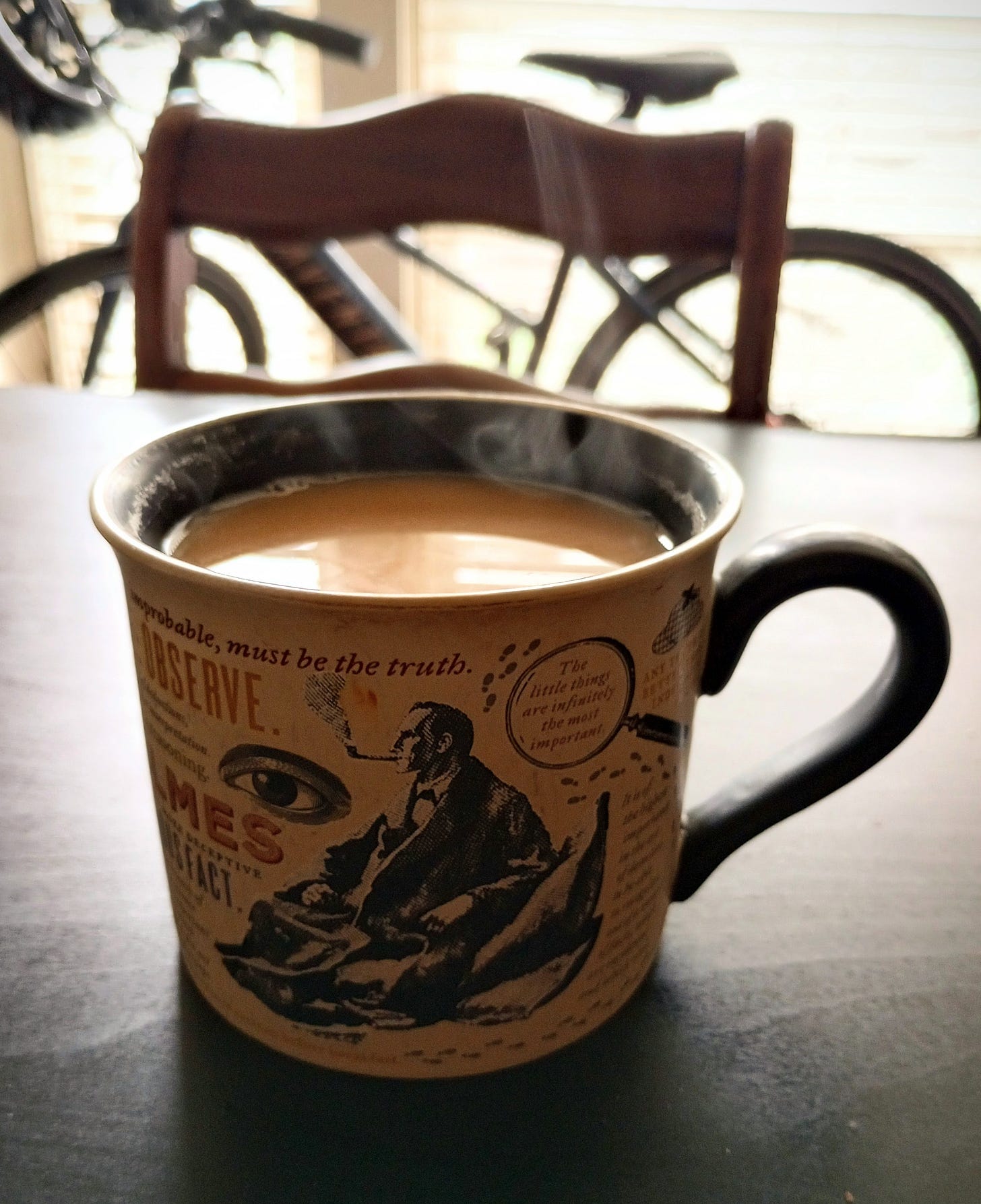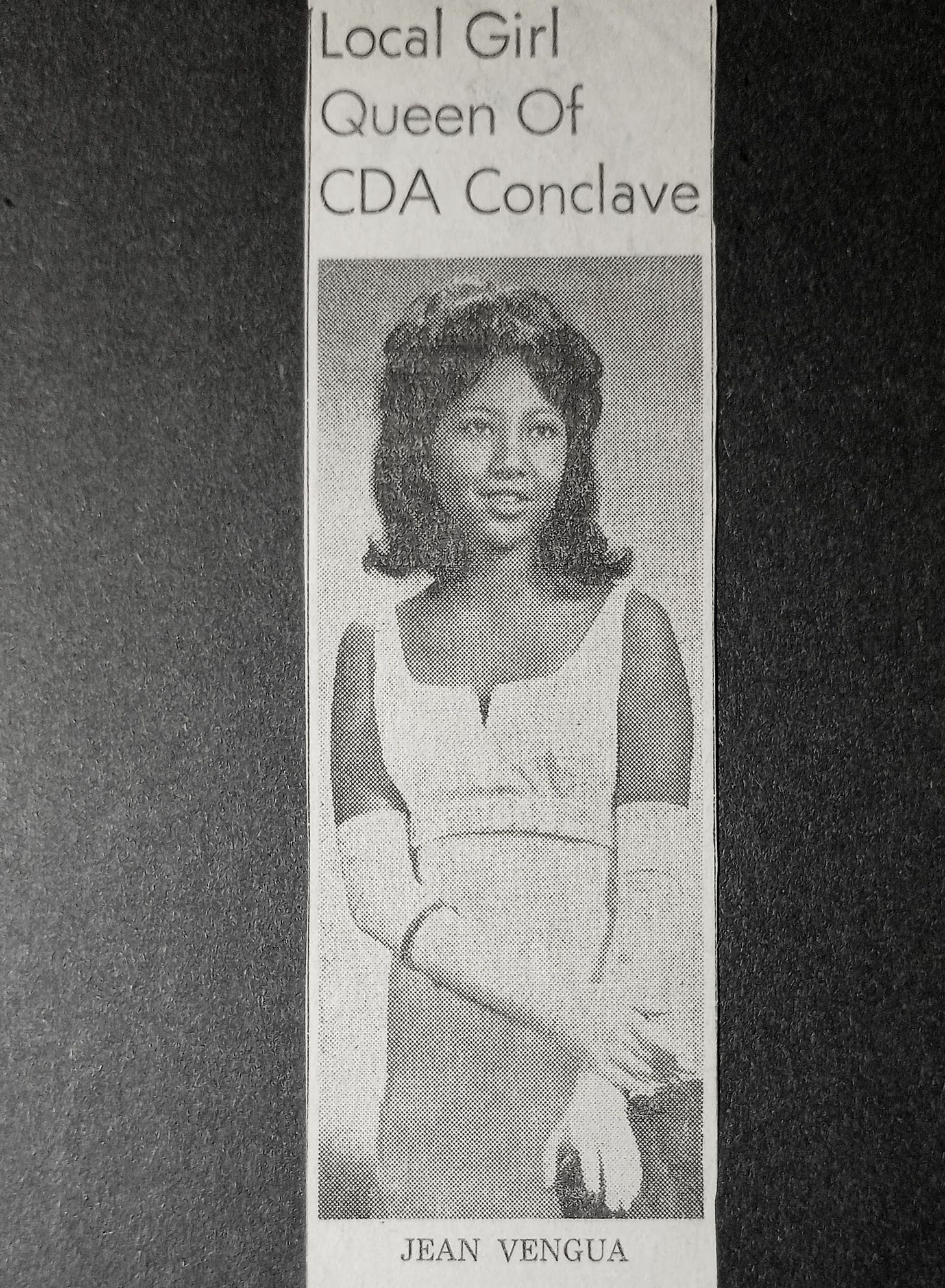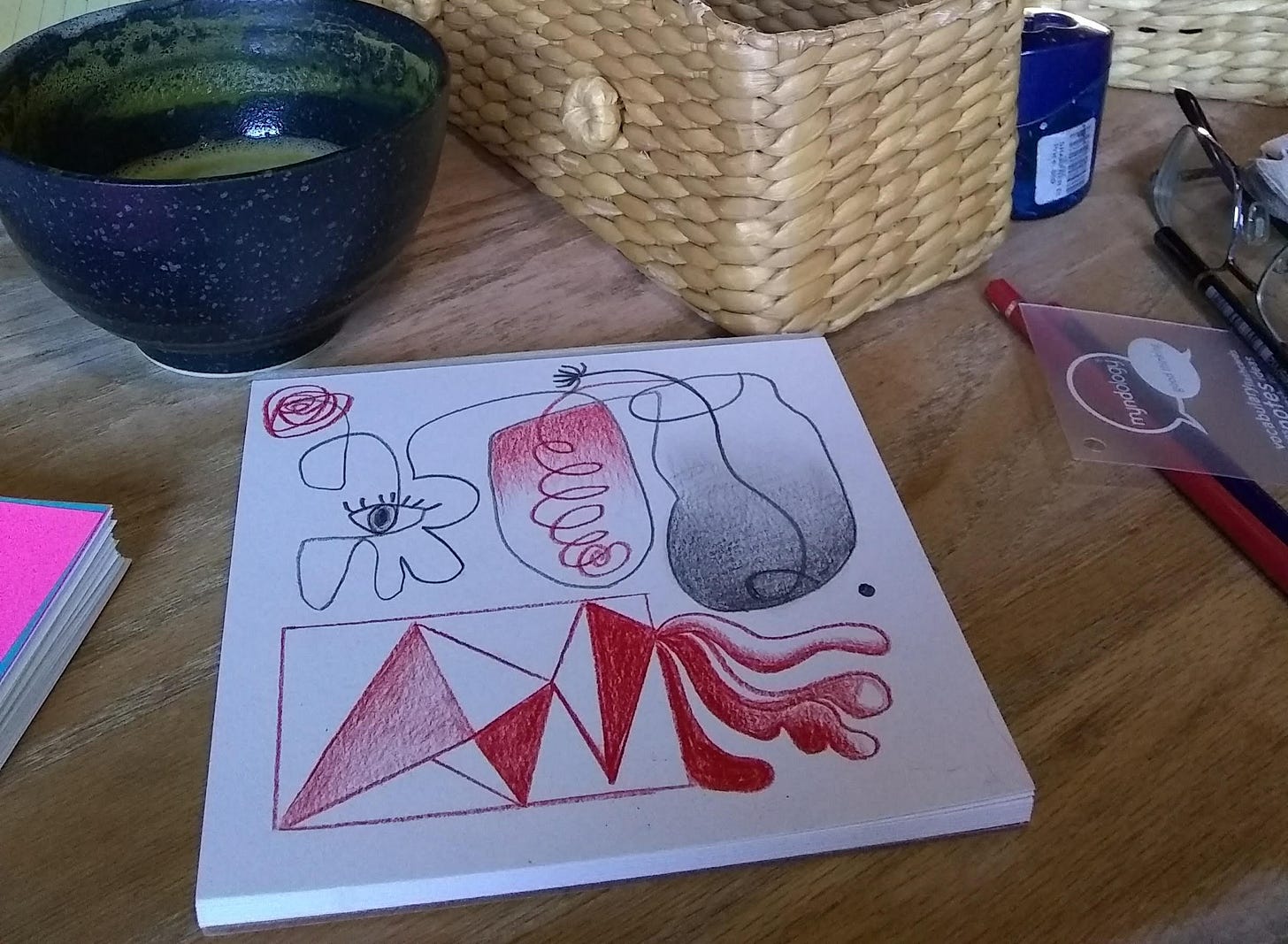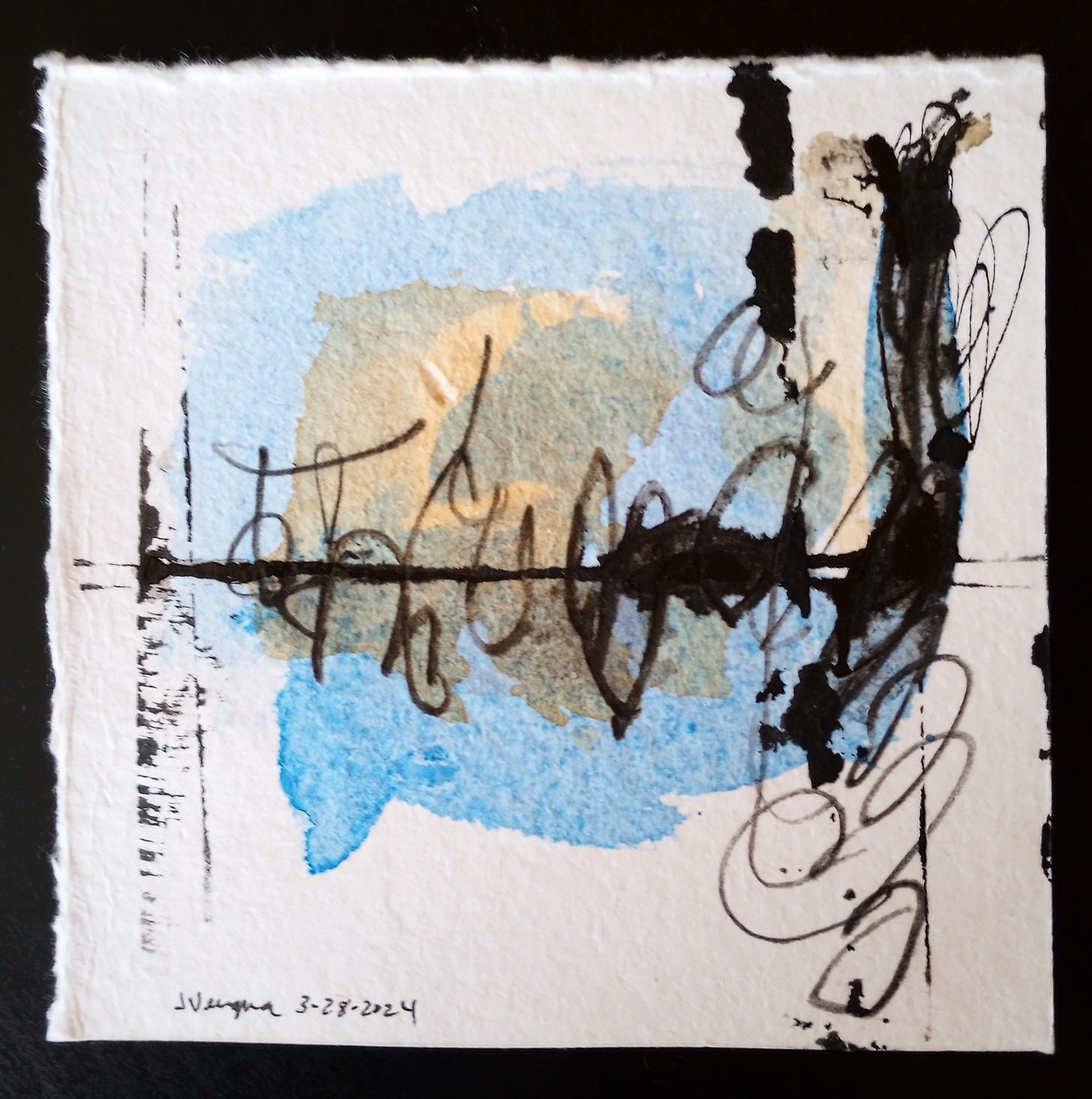Tea Time & Chaos
#146: Rupy C. Tut, Aishwary Subramanian, Shanthi Chandrasekar, Kosie Thiart, Fallen Fruit, Nicola Costantino, Aki Sasamoto, David Wilson/Michail Tsvetanov, David Sanborn/Night Music, Galcher Lustwerk
HERE & NOW
Writing this issue has been like trying to grasp a shapeshifting imp, so tantalizingly one thing, then another, then another, and so on; nothing materialized clearly until, while sipping cup of tea, I chanced upon the work of Rupy C. Tut. So it comes down to this very simple, quiet act of making and sipping tea—although it could also be complicated and exciting. A cup of tea can encompass all the drama of war, colonialism, revolution, and migration as well as the domestic or ritual activities surrounding boiled water, tea leaves, teapots, and cups.
On social media, I occasionally post an image of my morning cup of tea:

The design and shape of a cup can add an extra dimension to your tea. Sipping Dimbula from my Sherlock Holmes cup evokes thoughts of tea plantations and colonialism, Baker St. in London, critical thinking and detective novels.
Tea has also accompanied and inspired drawings, as in this photograph I took at my table at Counterpoint Coffee in Seaside, CA:
And sometimes the tea literally gets in the art. I painted this while drinking a cup of Assam tea:
The occasional use of tea in my art has felt like a novelty. But what if I take that and go deeper? Inspired by Rupy C. Tut, I’m wondering how the experience of brewing and drinking tea can inform the creation of art? If you let the metaphors steep, what flavors emerge, sweet and bitter, in both tea and art?
I’m reminded of my mother making spicy salabat (ginger tea) in a saucepan with a little sugar or honey. When I was in college, and worked with a math tutor from Sri Lanka, she would make chai, similar to salabat, but added cloves and other spices. I think she did that to relax me (a healing ploy; math was definitely my worst subject). That started me thinking about the connections between South Asia and the Philippines.
“Why Tea?” What does tea, and the rituals around it, mean for different people in different places? Artist Rupy C. Tut discusses the importance of tea in her life
Aishwary Subramanian has a chai-side art and inspiration chat with Shanthi Chandrasekar and Rupy C. Tut:
Over the decades I have developed a tendency to compartmentalize parts of my identity, perhaps facilitated by social media. As I get older I’m letting those “cells” open and flow into each other.
Around the time I reached puberty, my life as a single child raised by only my mother went from being solitary, quiet, and introspective—with no relatives around (they were all in the Philippines and my father was at sea)—to being very public when my mother became intensely involved with life in the local Filipino community and Filipino organizations. This meant that suddenly I had “aunties” and “uncles” everywhere. In the Filipino cultural context, it meant that my mom’s close friends became extended family. I entered a rambunctious world where the concerns and beliefs of others started to impinge on my secluded life, and I became much more self-conscious about my own behavior and protective of my individuality.
Mom started entering me in “queen contests“ when I was 13. At first, I agreed to this, seeing it as somewhat glamorous,1 but I really wasn’t prepared for the public scrutiny. Also, this particular type of contest involved raising money for sponsoring organizations, and that made me feel that my life and behavior—when I was just beginning to learn how to relate to people and socialize—had become monetized.

The compartmentalization may also arise from aspects of my immigrant family upbringing. My parents’ efforts to “fit in” to the mainstream were very much about keeping one’s nose to the grindstone and not “making waves,” especially around our mostly white neighborhood. Certain silences were maintained.
Maybe this explains why my subjective and (experimental) artistic impulses always seem to diverge from the norm—perhaps as a way to claim my individual space. Yet, I’m also fascinated by the interconnections that exist along the borders of our experience.
Taking down the walls is not always wise. But one can begin in small ways, by examining interconnections and sometimes opening up to beautiful chaos.
“Chaos saved me from the order that existed in my head.” Kosie Thiart:
RABBIT HOLE
Fallen Fruit, by David Allen Burns and Austin Young, is about turning wasted food into collaborative and edible art. It’s sad to hear that a lot of people living in affordable housing projects (at least in the L.A. area where they are filming) can’t plant fruit trees there because the soil is contaminated. But these two seem to be making a difference:
The art of Argentinian artist Nicola Costantino addresses how the bodies of animals and people are implicated in our consumption of products. Her work is inspired by Bosch’s Garden of Earthly Delights. Content Warning: meat, animals, art made from liposuction fat. Below is part 1:
Aki Sasamoto also does art relating to food (see her video “Food Cart” in YouTube), but her quirky performance piece, “Delicate Cycle” also has some interesting things to relate about physical movement, narrative, anger, and the struggle to process difficult experiences:
The Power of Movement: David Wilson and Michail Tsvetanov discuss what anti-ageism means for them in terms of movement for older people; David Wilson introduces artful movement where you can become a “playful and informed co-creator of your own fitness.”
SOUNDS
Rest in power, David Sanborn. I think I learned a lot about contemporary music by watching his shows (hosted with Jools Holland), Sunday Night and Night Music back in the 1980s. Here he is playing “Smile”2 on alto sax with Marcus Miller on bass, Hiram Bullock on lead guitar, Don Grolnick on keyboards, Buddy Williams on drums
Night Music #113, featuring Curtis Mayfield, Taylor Dayne, David Lindley,3 Shinehead, and Coleman Hawkins.
I wanted to end on food, so here’s a little “Snackin’” by Galcher Lustwerk. Makes me want to go out buy a chocolate croissant . . .
Thanks for reading Eulipion Outpost! Special thanks to readers who have donated here on Substack or in my Ko-fi page to support my efforts!
My Links List is now on an old-school Neocities site that I built.
Eulipion Outpost is a reader-supported publication. To receive new posts and support my work, consider becoming a free or paid subscriber.
. . . especially since winning (I did) meant that I would get to go to the convention in Hollywood and be crowned at the Hollywood Roosevelt Hotel, across the street from the famed Grauman’s Chinese Theatre. And maybe I’d meet some movie stars (I didn’t)!
"Smile” written by Paul Simon & Coleridge-Taylor Perkinson, produced by Phil Ramone.
Lindley doing “Werewolves of London”! I had the pleasure of seeing him perform at the Rio Theatre in Santa Cruz - phenomenal.







Wow, Jean, I am just keeping up with you now. That pageant picture of you looks like singers for the Shirelles, "Babby It's You".....